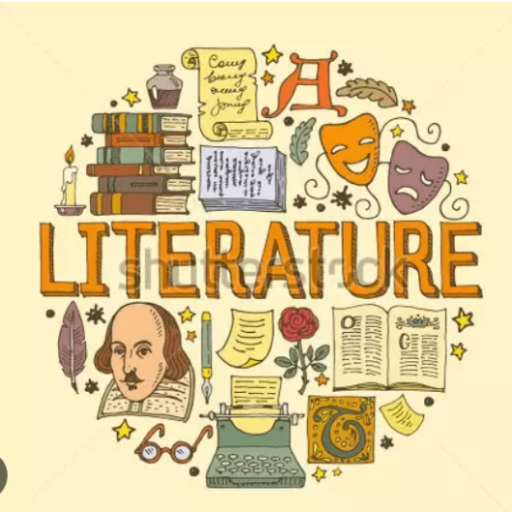Welcome to this comprehensive summary of “Orlando” by Virginia Woolf. In this article, we will delve into the intriguing world of one of Woolf’s most celebrated novels.
“Orlando” is a unique and groundbreaking work that challenges traditional notions of gender and time. Join us as we embark on a journey through the captivating story of Orlando, the protagonist who defies expectations and spans centuries.
Advertisement
Orlando Virginia Woolf Summary: Exploring a Literary Masterpiece
In this section, we will provide a brief overview of the plot, characters, and themes in “Orlando.”
Advertisement
Orlando Virginia Woolf Summary: Plot Summary
“Orlando” follows the life of the eponymous protagonist, Orlando, over several centuries. The novel begins in the Elizabethan era when Orlando is a young nobleman serving as a page in the court of Queen Elizabeth I.
Advertisement
As the story progresses, Orlando undergoes a remarkable transformation, transitioning from male to female without aging. Woolf skillfully weaves historical events and characters into Orlando’s narrative, providing a rich tapestry of experiences and observations.
Advertisement
The novel takes a unique turn as Orlando time-travels to different historical periods, including the 18th and 19th centuries, the Victorian era, and the modern age. Throughout these time jumps Orlando confronts the challenges and restrictions imposed by society, ultimately finding freedom and self-acceptance.
Characters: Orlando Virginia Woolf Summary
Orlando:
The central character of the novel, Orlando defies traditional gender norms and experiences a transformative journey spanning centuries.
Queen Elizabeth I:
A prominent historical figure, Queen Elizabeth I plays a significant role in Orlando’s life, serving as a source of inspiration and influence.
Sasha: Orlando Virginia Woolf Summary
A Russian princess and one of Orlando’s love interests, Sasha represents freedom and passion.
Shelmerdine:
A sailor and another love interest of Orlando, Shelmerdine symbolizes adventure and a break from societal conventions.
Themes in Orlando Virginia Woolf Summary
Gender and Identity:
One of the primary themes in “Orlando” is the exploration of gender and identity. Through Orlando’s transformation from male to female, Woolf challenges the traditional binary understanding of gender and highlights its fluidity.
Time and History: Orlando Virginia Woolf Summary
Woolf uses time as a prominent motif, allowing Orlando to navigate different historical periods. This exploration of time underscores the transient nature of human existence and the interconnectedness of historical events.
Freedom and Self-Expression:
Orlando’s journey is a quest for personal freedom and self-expression. Woolf emphasizes the importance of breaking societal constraints and embracing one’s true self.
Now that we have provided a summary of the novel, let’s delve deeper into some of the key aspects and moments within “Orlando.”
Orlando’s Transformation: A Journey Through Time
Orlando’s transformation from a man to a woman serves as a pivotal moment in the novel. This metamorphosis allows Orlando to experience life from different perspectives and challenges societal expectations. Woolf’s portrayal of this transformation is both profound and nuanced, inviting readers to question and reimagine traditional concepts of gender.
The transition itself occurs during the 18th century while Orlando is living in Constantinople as an ambassador. The sudden change not only alters Orlando’s physical appearance but also her understanding of the world. This pivotal event triggers a period of introspection and self-discovery for Orlando, ultimately leading to her liberation from societal norms.
The Influence of Historical Figures: Orlando Virginia Woolf Summary
Throughout “Orlando,” Virginia Woolf masterfully incorporates historical figures and events into the narrative, blurring the lines between fact and fiction. This technique adds depth and authenticity to the story while also shedding light on the impact of history on individual lives.
One notable historical figure depicted in the novel is Queen Elizabeth I. Orlando’s interactions with the Queen provides a glimpse into the power dynamics and
expectations of the Elizabethan era. Queen Elizabeth I serves as a catalyst for Orlando’s self-exploration and acts as a symbol of female empowerment in a patriarchal society.
Love and Desire: Orlando’s Romantic Encounters
Love and desire are central themes in “Orlando,” as the protagonist embarks on various romantic encounters throughout the centuries. These relationships contribute to Orlando’s personal growth and highlight the complexity of human connections.
One of Orlando’s notable love interests is Sasha, a Russian princess whom Orlando encounters during her time in Russia. Their passionate relationship challenges societal conventions and represents the liberating power of love. Sasha’s presence in Orlando’s life acts as a catalyst for self-discovery and contributes to Orlando’s journey toward self-acceptance.
Another significant romantic encounter occurs when Orlando meets Shelmerdine, a sailor, during her time in Constantinople. Shelmerdine represents adventure, freedom, and a departure from societal expectations. Their relationship challenges the boundaries of gender and societal norms, illustrating Woolf’s exploration of unconventional love.
Conclusion
In conclusion, “Orlando” by Virginia Woolf is a literary masterpiece that defies expectations and explores the fluidity of gender and time. Through the transformative journey of Orlando, Woolf invites readers to question societal norms and embrace the freedom of self-expression. The novel’s blend of historical events, vivid characters, and profound themes captivates readers, making it a timeless work of literature.
So why not immerse yourself in the enchanting world of “Orlando”? Experience the power of Woolf’s words and embark on a journey of self-discovery and liberation alongside the unforgettable protagonist.
Frequently Asked Questions
Virginia Woolf is the author of “Orlando.” She was a prominent modernist writer and a key figure in the Bloomsbury Group, an influential circle of intellectuals and artists in the early 20th century.
Orlando’s transformation from male to female serves as a metaphor for self-discovery, gender fluidity, and freedom from societal constraints. It challenges traditional notions of gender and invites readers to question established norms.
Woolf uses time as a central motif in “Orlando,” allowing the protagonist to travel through different historical periods. This exploration of time underscores the transient nature of human existence and highlights the interconnectedness of historical events.
Virginia Woolf is celebrated for her contributions to modernist literature. Some of her other notable works include “Mrs. Dalloway,” “To the Lighthouse,” and “A Room of One’s Own.”

